While most North Americans will instantly recognize the widespread and common Canada Goose that is so often seen on city lakes or golf courses, far fewer know that there is a very similar species known as the Cackling Goose that was recently split from the Canada Goose. The Cackling Goose is much smaller than most races of Canada Geese, although there is some overlap in size.
The Cackling Goose is made up of four subspecies. Migration generally takes place at low altitudes, and survival rates from one year to the next are relatively high. The population has generally been increasing.
Migration generally takes place at low altitudes, and survival rates from one year to the next are relatively high. The population has generally been increasing.
Cackling Goose has a smaller bill and rounder head than the Canadian.
The are four subspecies of Cackling Goose. Two show a white ring around the neck of the birds, at the base of the neck near the body.
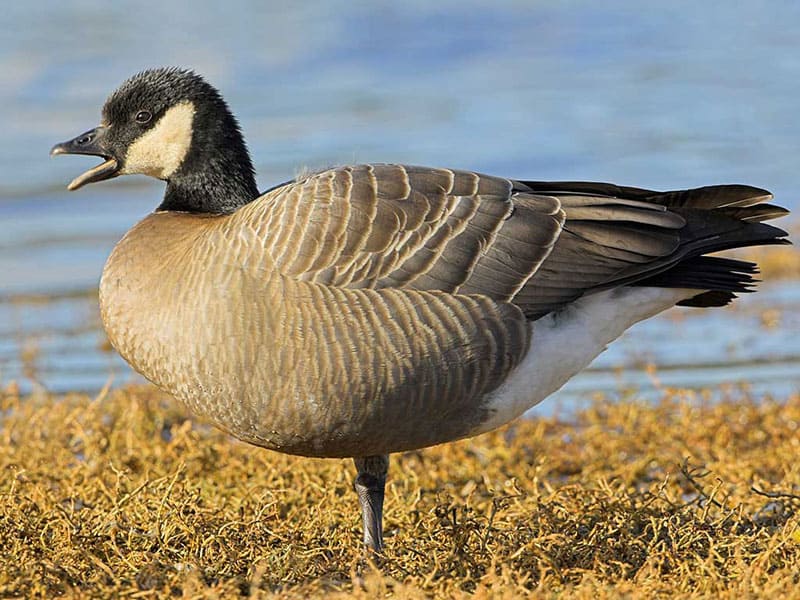
Generally like a small Canada Goose. Dark head and neck with white chin strap. Small bill. Brown body, darker tail. Underparts darker or lighter, depending on the race.Calls reminiscent of Canada Goose, but higher pitched. Underside of tail white. Photograph © Glenn Bartley.
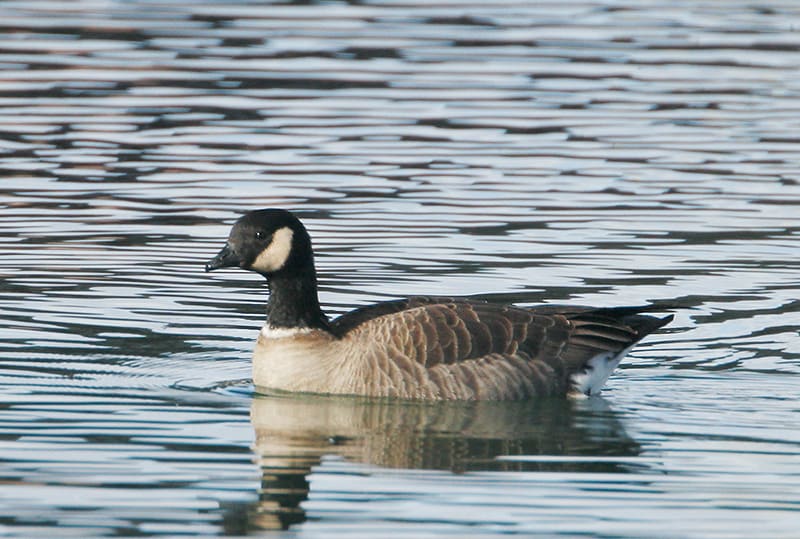
This bird, perhaps the “Richardson’s” race has a white band on the neck and pale chest. Photograph © Tom Grey.
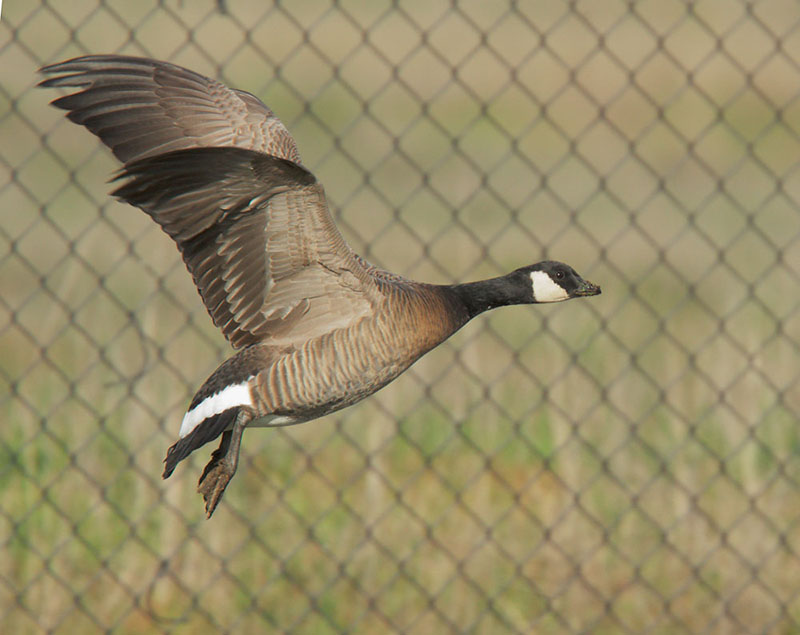
This Cackling Goose lacks the white neck band and is darker underneath than the bird in the above image. The tail shows a white “U” shape from above. Photograph © Tom Grey.
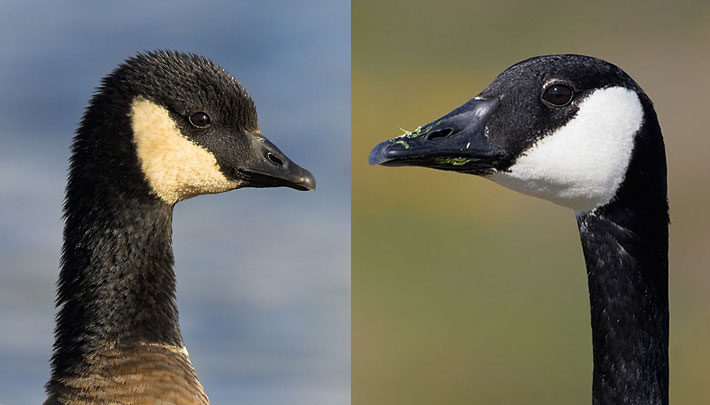
Cackling Goose on the left, Canada Goose on the right. The Cackling Goose has a smaller bill. The bill and head of the Canada Goose present a more sloped appearance.
Description of the Cackling Goose
BREEDING MALE
The Cackling Goose is mostly brownish with a black head and neck, a white cheek patch on each side of the face, and a black tail. Lenght: 23″ – 32″
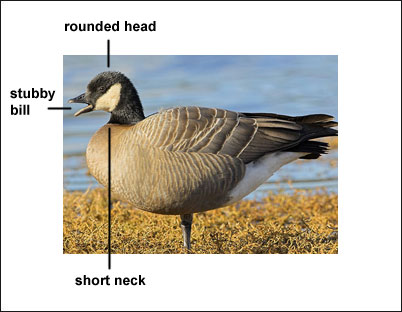
Female
Sexes similar.
Seasonal change in appearance
None.
Juvenile
Juveniles are similar to adults.
Habitat
Lakes, ponds, and grassy fields.
Diet
Plant material and some insects, mollusks, and fish.
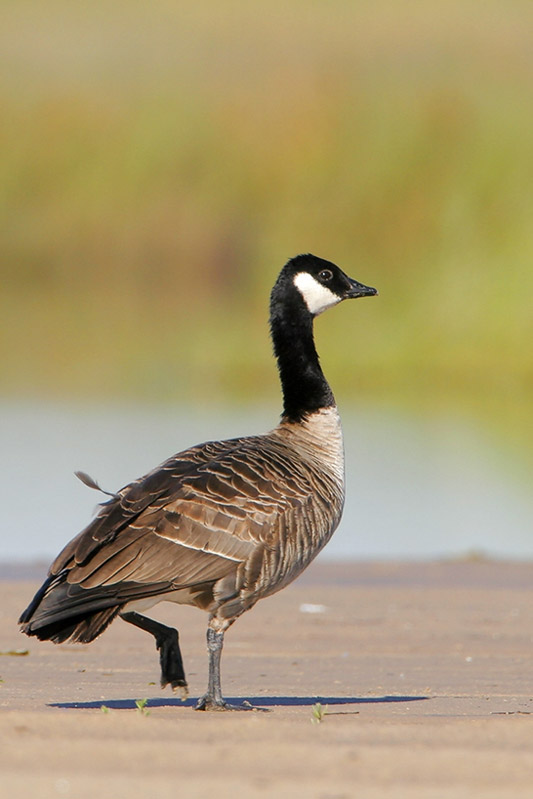
Photograph © Greg Lavaty.
Behavior
Forages by grazing.
Range
Breeds in northern portions of Canada and Alaska and winters primarily in parts of the western and south-central U.S.
Fun Facts
Cackling Geese were formerly considered to be subspecies of Canada Geese.
Vocalizations
The call is a honking that is higher pitched than that of Canada Geese.
Similar Species
Canada Goose
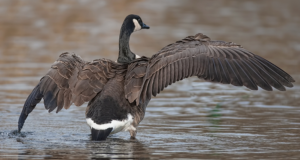
Canada Goose. Photograph © Alan Wilson.
Canada Geese are larger, with longer necks and bills.
Nesting
The nest is a depression lined with grasses and sticks.
Number: 4-7.
Color: White.
Incubation and fledging:
– Young hatch at 25-28 days.
– Young fledge (leave the nest) in 1-2 days after hatching but remain with the adults for some time.

